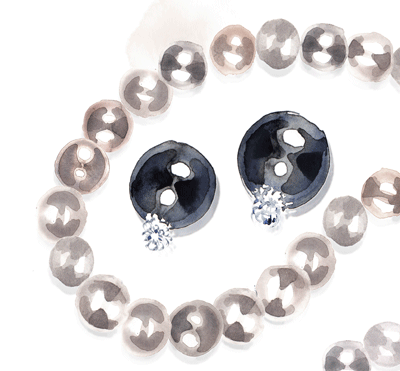Icons of style for her: Mikimoto pearls
Lucia van der Post celebrates the breakthrough discovery of Kokichi Mikimoto in making the perfect cultured pearls

Styles of jewellery may come and go-spikes and skulls, jaw-dropping stones and glittering chains have all had their moment-but pearls go on forever. They can be worn night and day, by young and old, with a pair of jeans and a crisp white shirt or a little black dress. They can be worn boldly, as they were by the potentates of old, or demurely, as demonstrated by Country Life's very own ‘Girls in Pearls'.
Natural pearls are formed when a piece of grit enters the mollusc's shell and a protective layer of calcium carbonate is built up around it (the ‘nacre'). Few natural pearls are harvested today, and any that do arrive on the market almost always come from a vintage source. These days, natural pearls are increasingly rare, and with prices reaching stratospheric levels, we should all be grateful to the legendary Kokichi Miki-moto, who perfected the tech-nique for creating cultured pearls.

In culturing, the grit is introduced artificially. Where many people had tried and failed, it was Mikimoto's lasting achievement to find a method that succeeded in creating a perfect pearl. He found that introducing a tiny bead of polished shell into the mollusc set the process in motion. The oysters were then returned to the sea in baskets, and nature took over. Today, almost all the pearls on the market are cultured, cultivated using the same methods pioneered by Mikimoto in Japan. For the world at large, this has meant that these wonderfully lustrous beads can be enjoyed by everybody.
For those looking to buy a string of pearls, it's worth noting that the qualities to look out for include lustre (or glow), colour (shades of white and pink rose are the most sought after), shape (the more perfectly spherical, the better) and surface perfection. Mikimoto has helpfully devised a system of grading pearls, ranging from A1 through to AAA (for the most perfect), which enables any purchaser to gauge exactly what it is that they're buying.
* Subscribe to Country Life and pay just £29.99
Sign up for the Country Life Newsletter
Exquisite houses, the beauty of Nature, and how to get the most from your life, straight to your inbox.
Country Life is unlike any other magazine: the only glossy weekly on the newsstand and the only magazine that has been guest-edited by HRH The King not once, but twice. It is a celebration of modern rural life and all its diverse joys and pleasures — that was first published in Queen Victoria's Diamond Jubilee year. Our eclectic mixture of witty and informative content — from the most up-to-date property news and commentary and a coveted glimpse inside some of the UK's best houses and gardens, to gardening, the arts and interior design, written by experts in their field — still cannot be found in print or online, anywhere else.
-
 About time: The fastest and slowest moving housing markets revealed
About time: The fastest and slowest moving housing markets revealedNew research by Zoopla has shown where it's easy to sell and where it will take quite a while to find a buyer.
By Annabel Dixon
-
 Betty is the first dog to scale all of Scotland’s hundreds of mountains and hills
Betty is the first dog to scale all of Scotland’s hundreds of mountains and hillsFewer than 100 people have ever completed Betty's ‘full house’ of Scottish summits — and she was fuelled by more than 800 hard boiled eggs.
By Annunciata Elwes